Storing seeds properly ensures their longevity, viability, and ease of access when planting season arrives. From simple household items to purpose-built organizers, there are countless approaches to keep seeds cool, dry, and well‐labeled. Key principles include using airtight containers, controlling moisture with desiccants, maintaining consistent cool temperatures (even refrigeration or freezing when appropriate), and clear labeling or indexing for fast retrieval. Whether you opt for upcycled jars, photo‐binder sleeves, vacuum‐sealed packs, or DIY pouches, each method balances protection against humidity and pests with ease of organization. Explore these 20 seed storage ideas to find the techniques that best suit your collection size, space, and budget.
1. Plastic Shoe Box with Lid
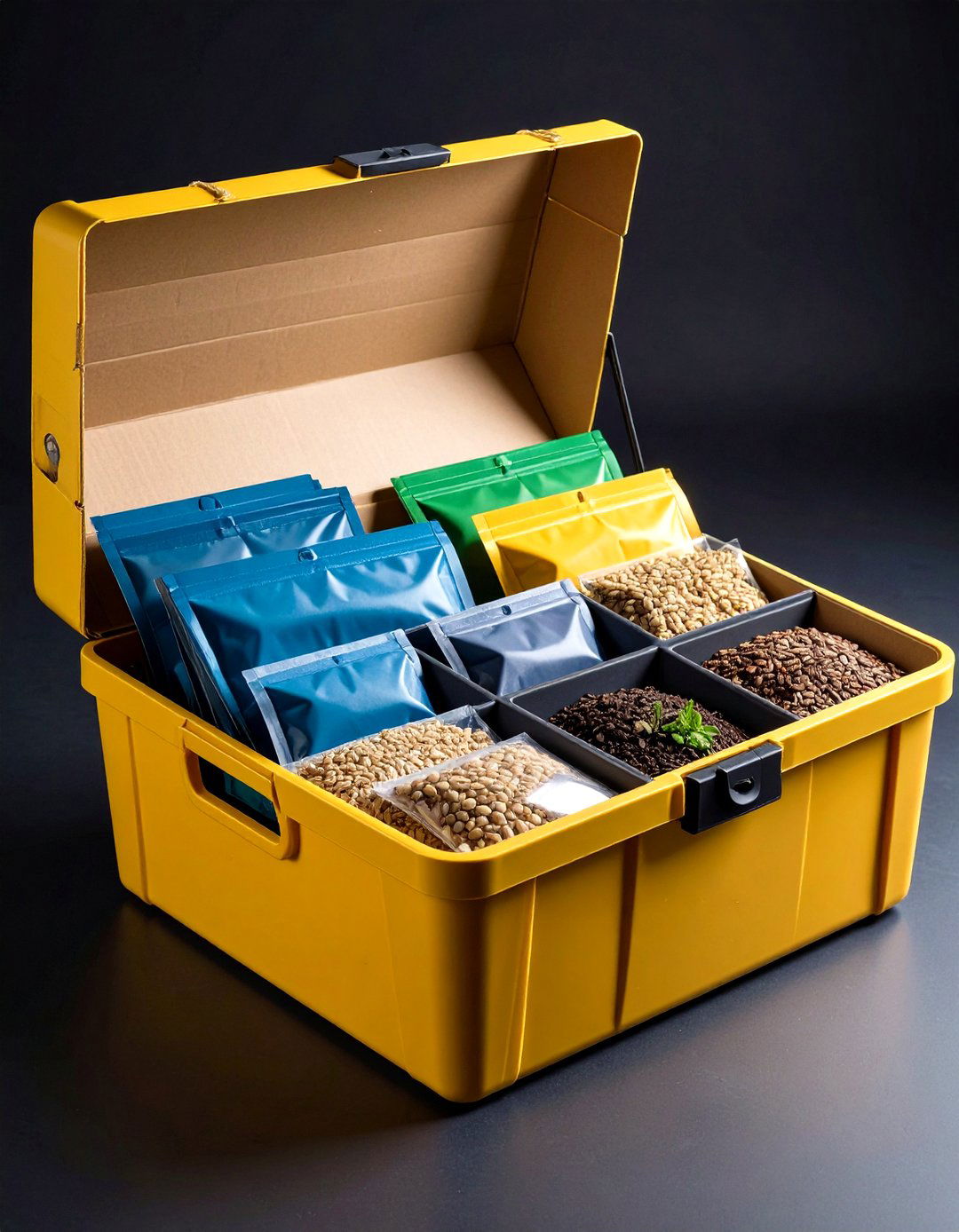
A plastic shoe box provides an affordable, lightweight way to gather seed packets in one place. Its snap‐on lid creates a fairly airtight seal, while its shallow profile makes it easy to stack or slide onto a shelf. Group seeds by type or year, and tuck a silica gel packet inside to absorb residual moisture, helping seeds stay dry and viable for up to several years.
2. Cardboard Photo Storage Box
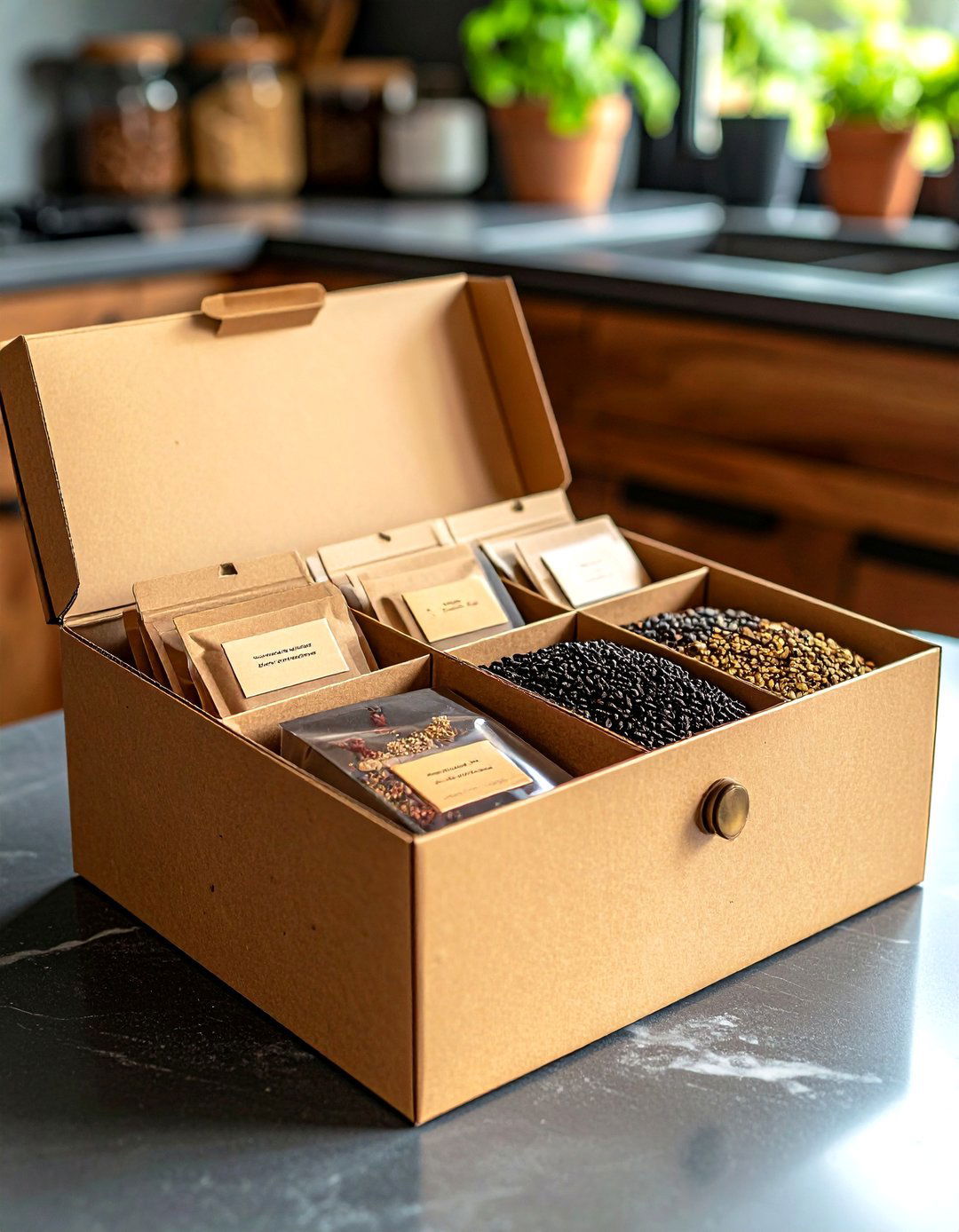
Cardboard photo boxes, designed to hold 4×6 prints, are perfect for seed envelopes. They’re sturdy, come with dividers, and fit standard index cards for labeling by variety or date. Store the boxes in a cool, dark closet or basement shelf to minimize temperature fluctuations and light exposure, both of which can degrade seed quality over time.
3. Photo Album Binder Sleeves
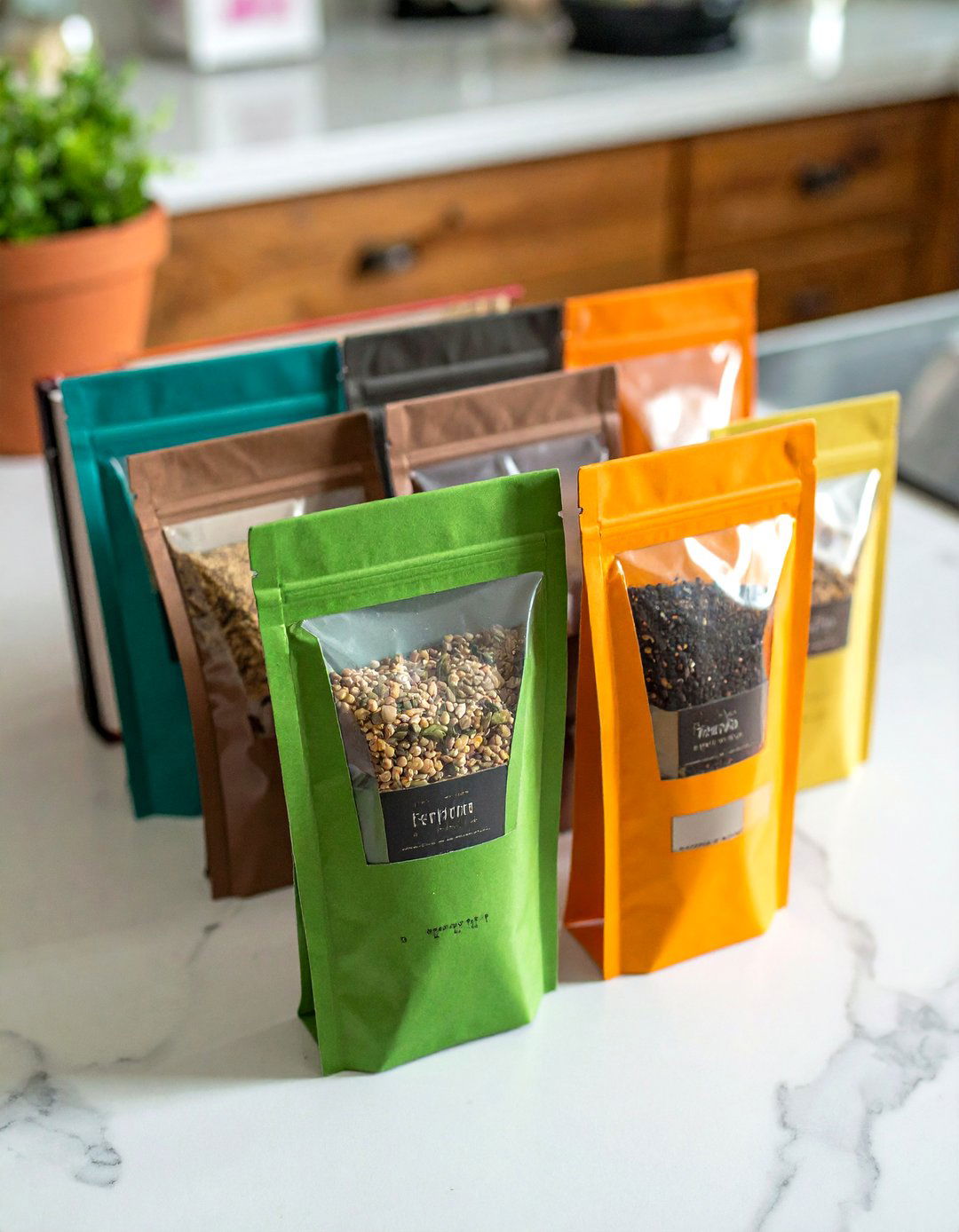
Using a photo album with clear pocket sleeves lets you slide individual seed packets into archival‐safe plastic. This method keeps packets flat, visible at a glance, and protected from handling wear. Label each sleeve with planting dates or germination notes, and store the binder in a cool spot, ideally inside a larger airtight bin with desiccant packets for added moisture control.
4. Mason Jars with Lids
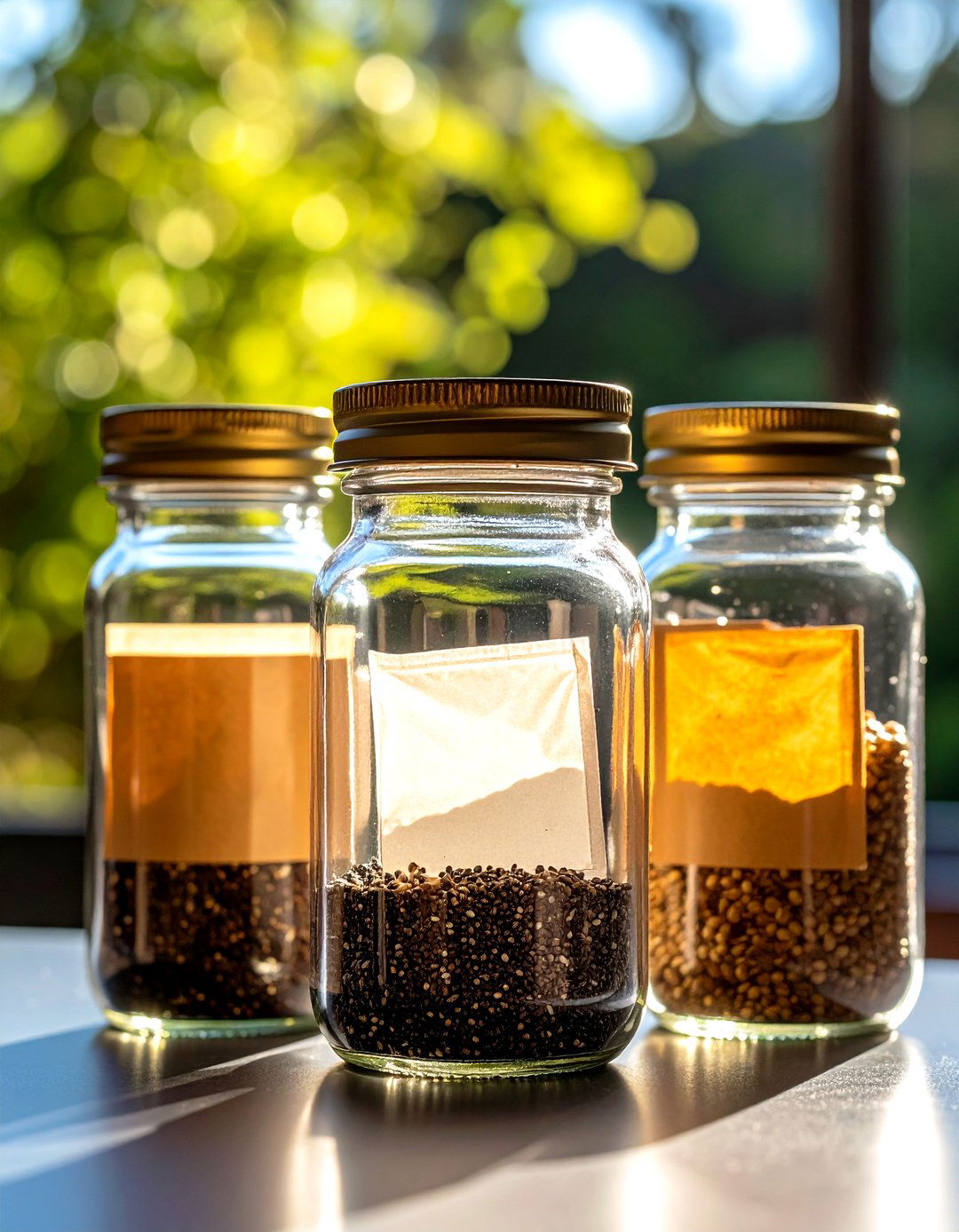
Mason jars offer glass’s non‐reactive surface and an airtight seal when fitted with two‐piece canning lids. After seeds are fully dried, place them in small glass vials or envelopes inside the jar, then add a silica gel packet. Store the jars in a refrigerator or freezer for long‐term preservation; just allow them to acclimate to room temperature sealed for 12 hours before opening to prevent condensation.
5. Glass Spice Jars
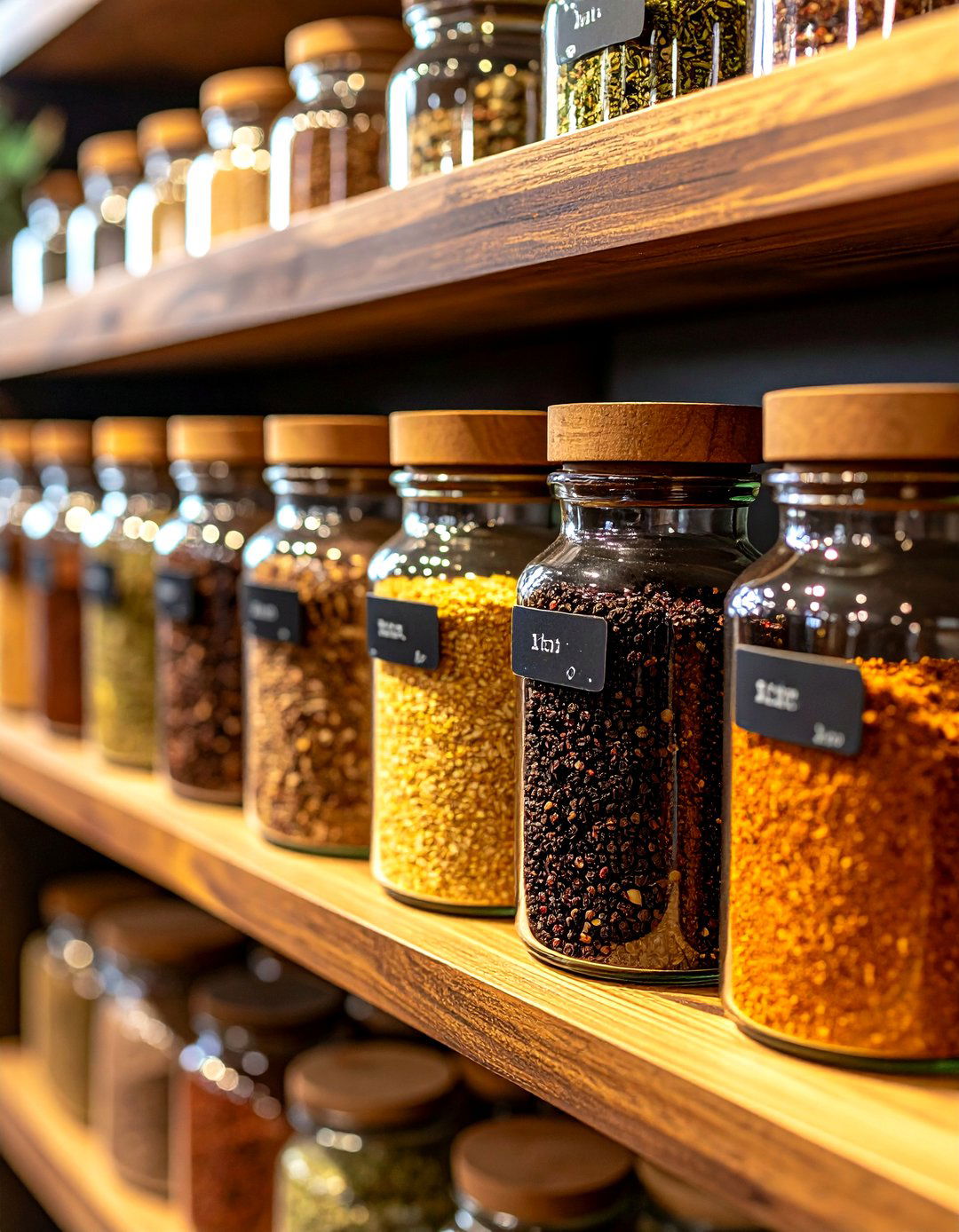
Repurpose empty spice jars as seed storage by cleaning and drying them thoroughly. Their small size is ideal for single varieties or heirloom seeds. Add a tiny sachet of desiccant, and label the jar’s lid or body with variety, harvest year, and germination rate. Group multiple jars on a spice rack-style shelf, keeping them away from direct sunlight and heat sources.
6. Vacuum-Sealed Bags
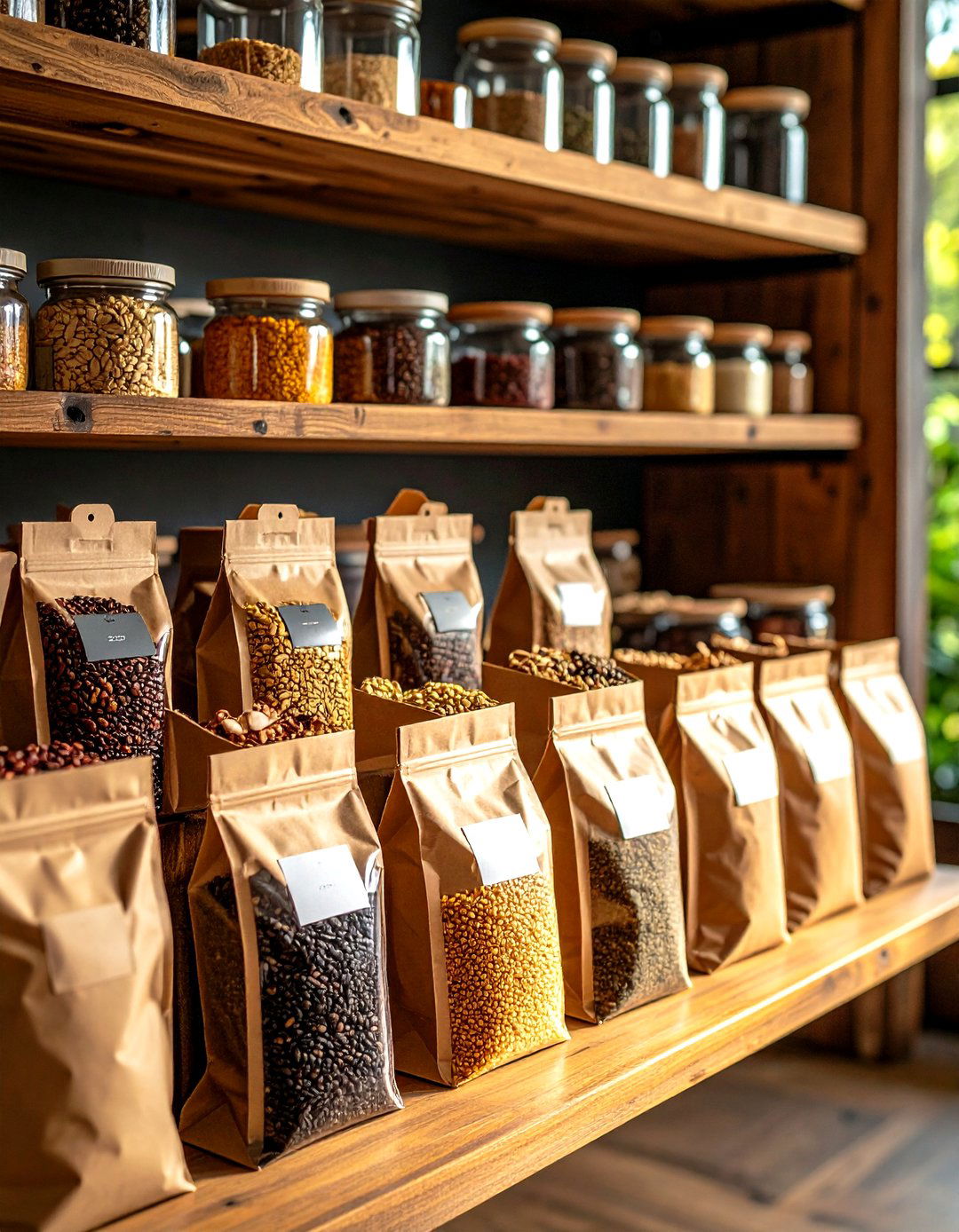
Vacuum-sealed bags significantly reduce oxygen and moisture around stored seeds. Place labeled paper envelopes or small glass vials inside a vacuum bag, remove air with a handheld pump or countertop sealer, and seal. Vacuum-packed seeds can be stored in a cool pantry, refrigerator, or freezer, extending viability for a decade or more when kept consistently dry.
7. Tackle or Craft Organizer Box
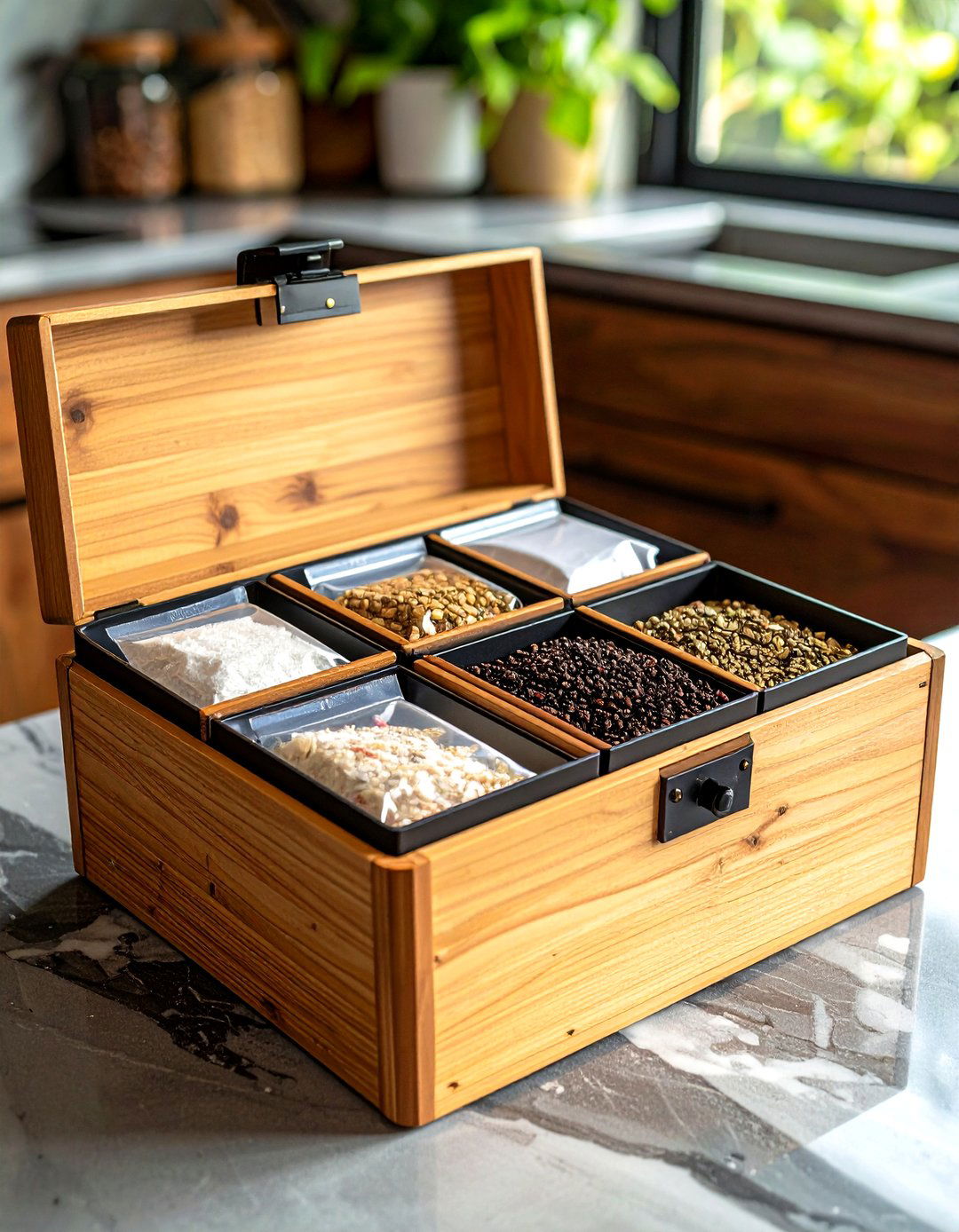
Fishing tackle boxes or craft organizers with multiple compartments are perfect for categorizing seed packs. Each tray can hold seeds by plant family, planting season, or harvest year. These boxes often have clear lids for quick identification. Enhance moisture control by tucking desiccant packets in each compartment, and label the trays externally for faster access.
8. DIY Origami Seed Envelopes
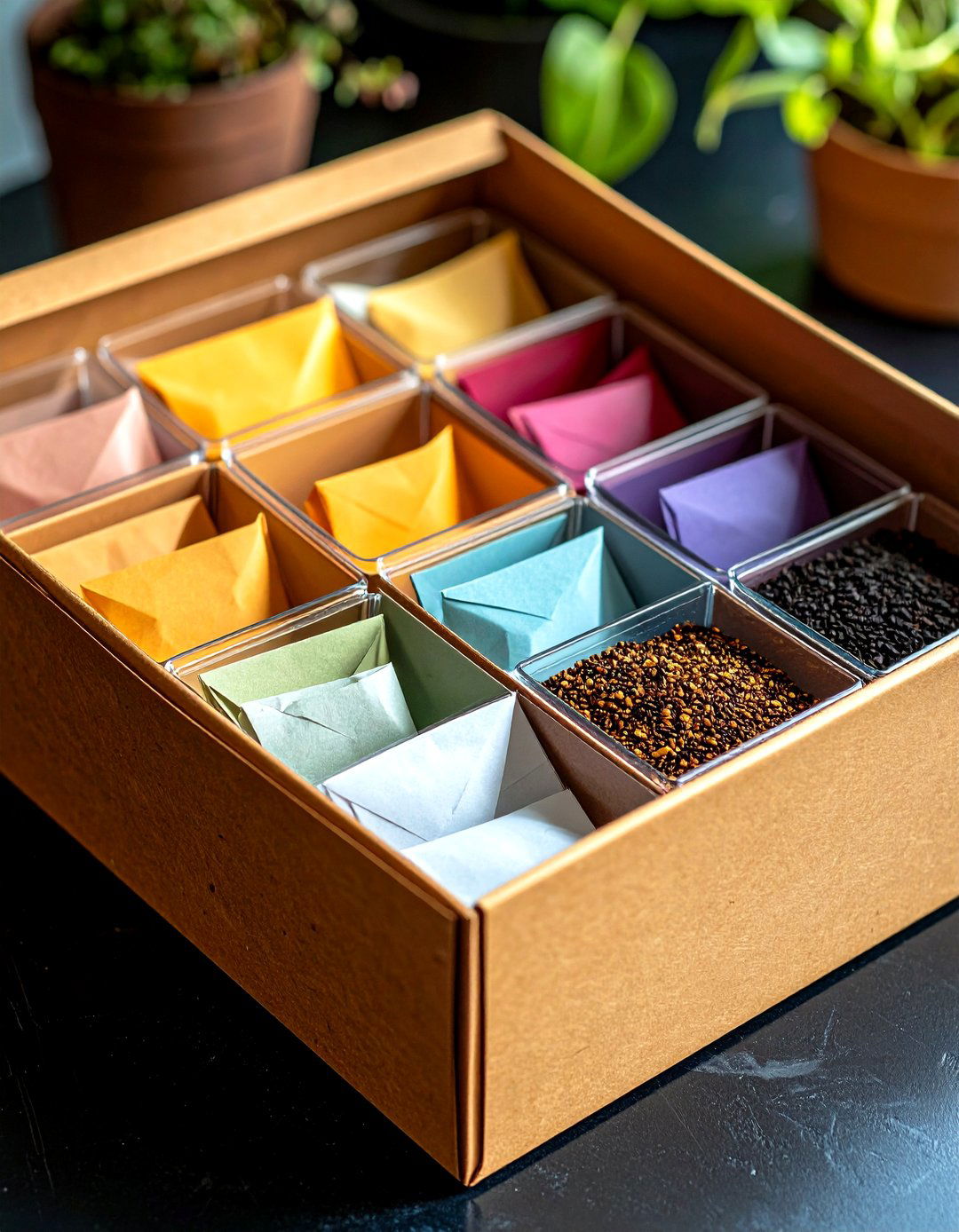
Fold origami pouches from tracing or glassine paper to create breathable, write-on seed envelopes. Glassine is less porous than regular paper and allows seeds to dry thoroughly before storage. Write variety and date in pencil (to avoid ink bleed), then tuck the envelopes into a larger airtight container with desiccant. This low-cost DIY method is both recyclable and customizable.
9. Upcycled Film or Pill Containers
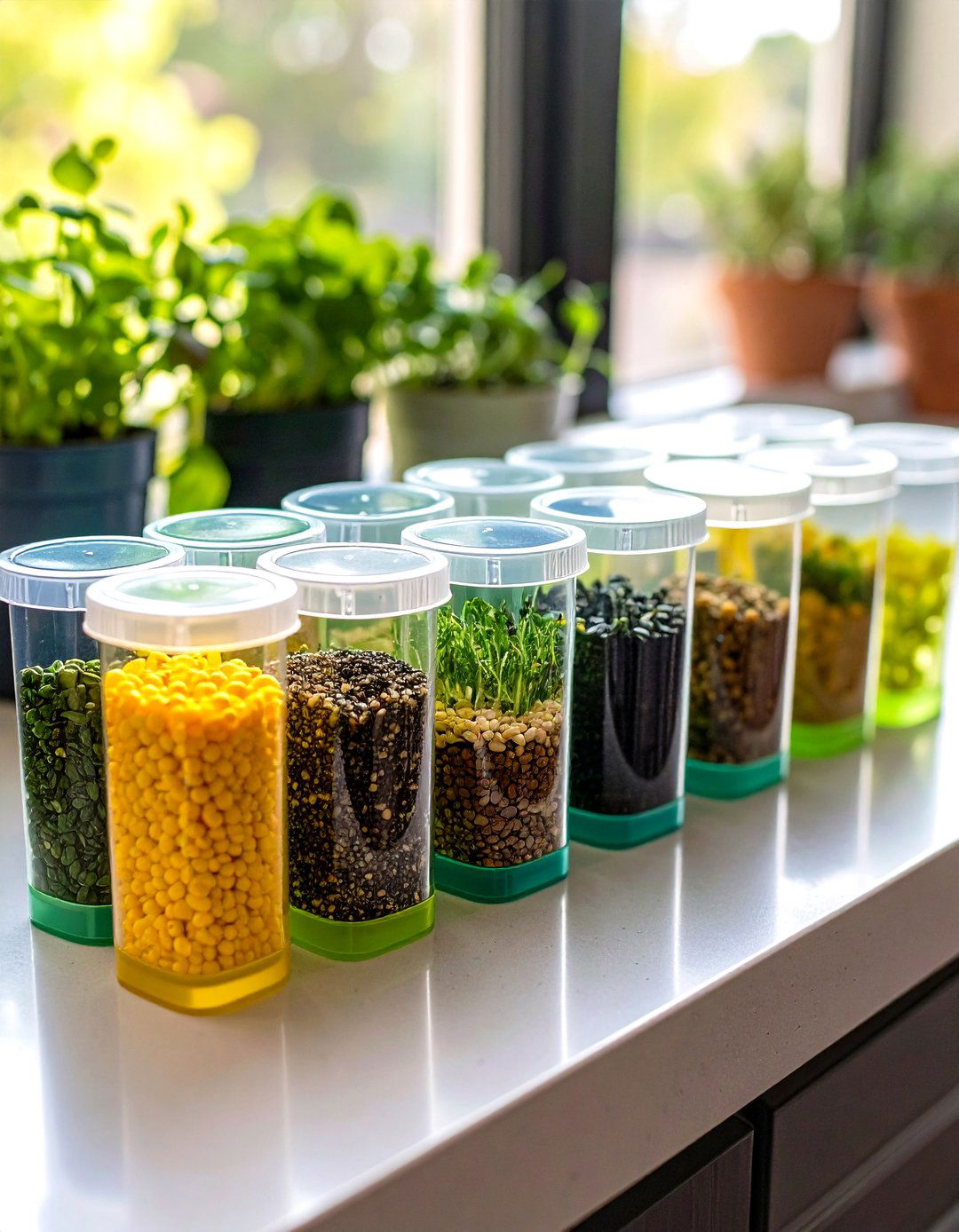
Small film canisters and pill bottles make portable, moisture-resistant seed holders. Clean and dry them before use, then add seeds plus a pinch of rice or silica gel. Seal tightly, label the exterior, and store within a larger box or drawer. Their rigid form factor protects seeds from crushing and keeps small lots neatly contained.
10. Old Metal Ammo Can

An ammo can’s robust metal construction, rubber gasket seal, and locking latch provide a near-perfect environment for seed storage. Line the bottom with desiccant packs, then place seed envelopes inside. Ammo cans are ideal for the basement or garage, but can also be refrigerated or frozen due to their durability and airtight design.
11. Cigar Humidor in Refrigerator
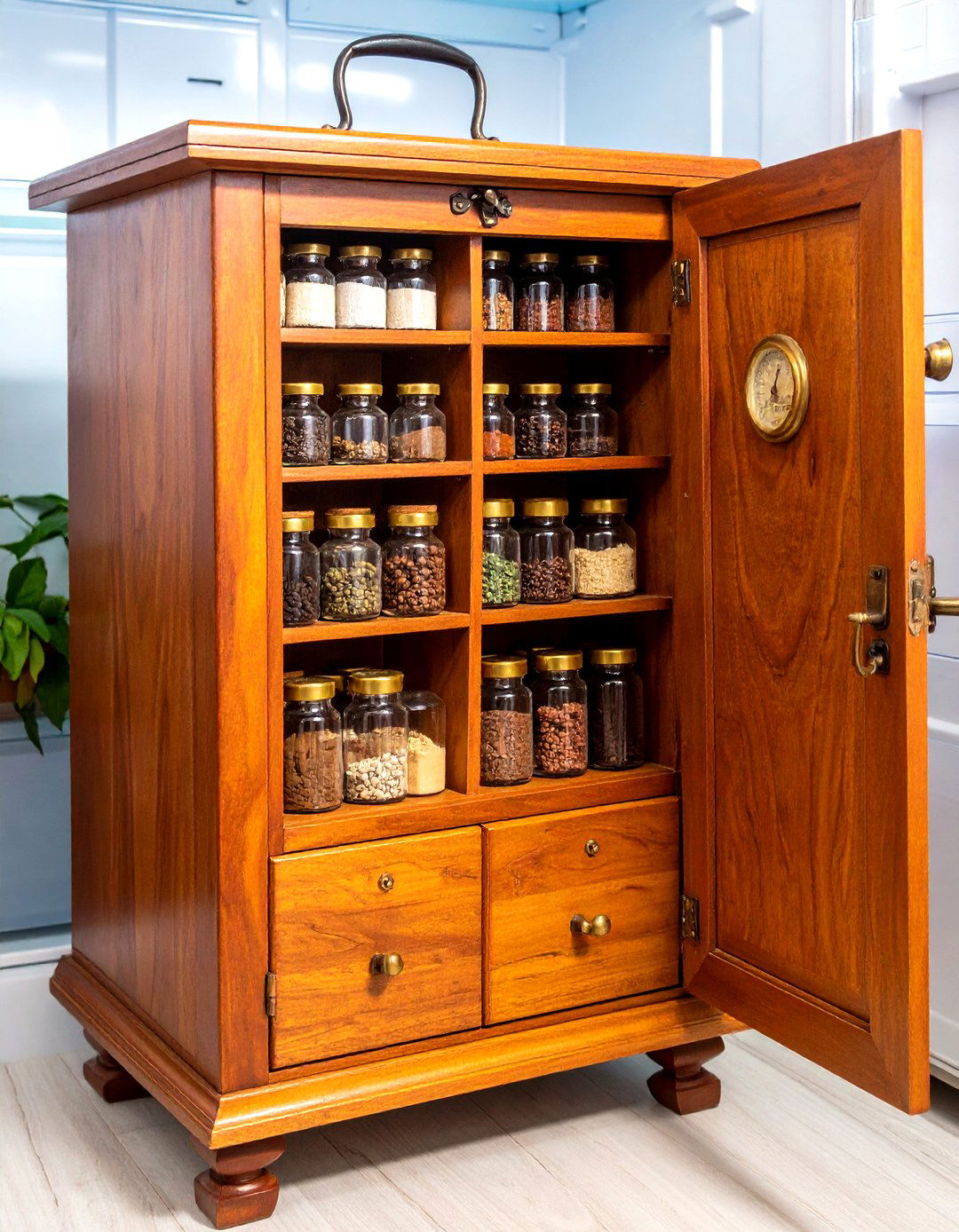
A vintage cigar humidor with its built-in hygrometer can be repurposed to store seeds in the fridge. Place seeds in paper envelopes or small glass vials inside the humidor, add a silica pack, and keep at 35–41°F (2–5°C). The humidor’s wood absorbs humidity fluctuations, while the fridge ensures stable low temperatures for multi-year seed viability.
12. Plastic Seed Storage Box with Compartments
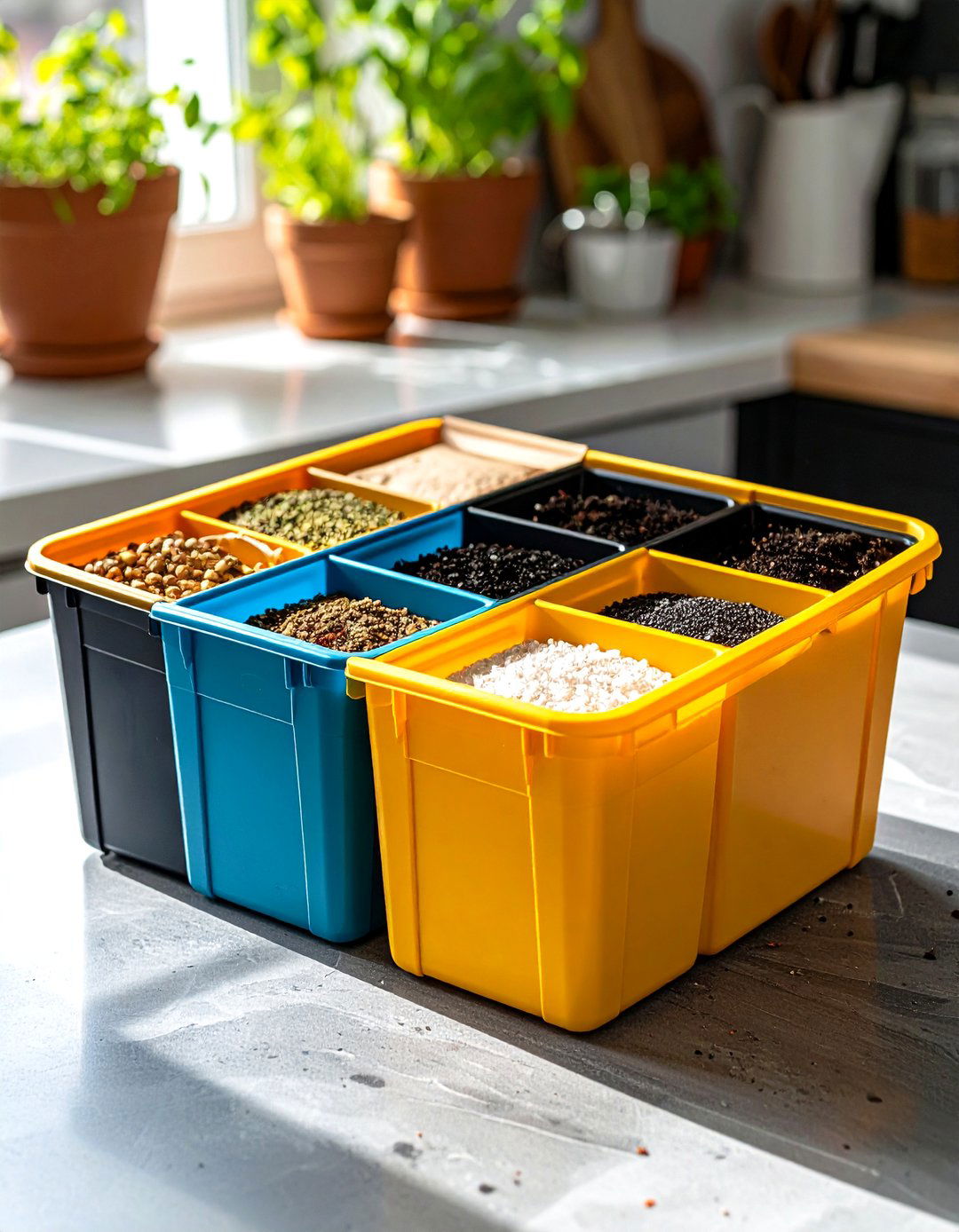
Specialized seed storage boxes feature individual plastic compartments sized for standard seed packets. These boxes often come with removable trays and clear lids. Place desiccant in each compartment, label the trays by crop type, and store in a cool location. Their modular design makes them a gardener’s favorite for organized collections.
13. Airtight Glass Jars with Silica Packs
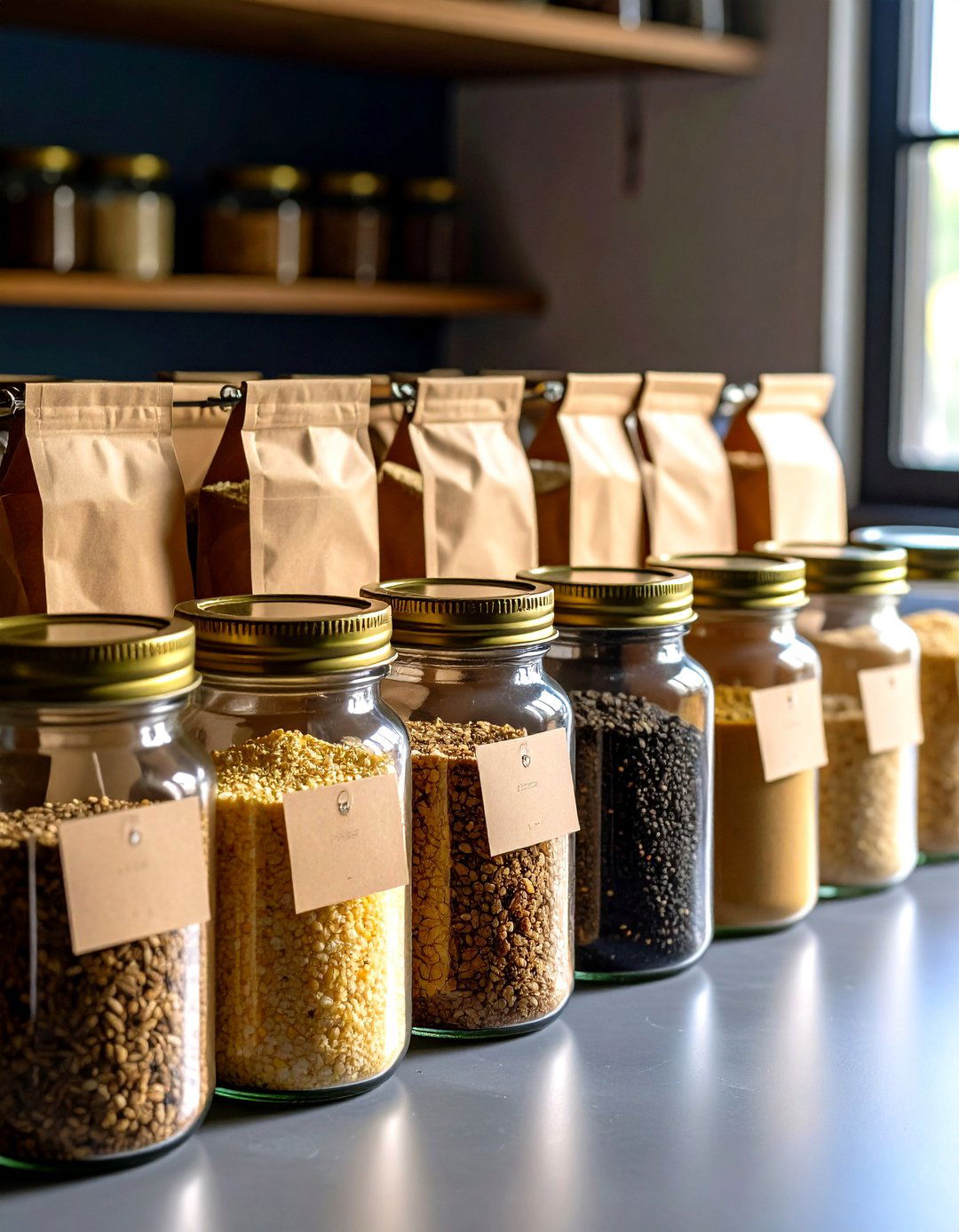
Glass jars with rubber‐gasket lids (e.g., Le Parfait or Kilner) are airtight and reusable. Fill with seed envelopes and a silica gel packet or DIY desiccant (rice, charcoal, or powdered milk). Store in a temperature‐stable cupboard or basement. The airtight seal and nonporous glass help maintain low humidity around seeds for years.
14. Refrigerator Drawer Trays
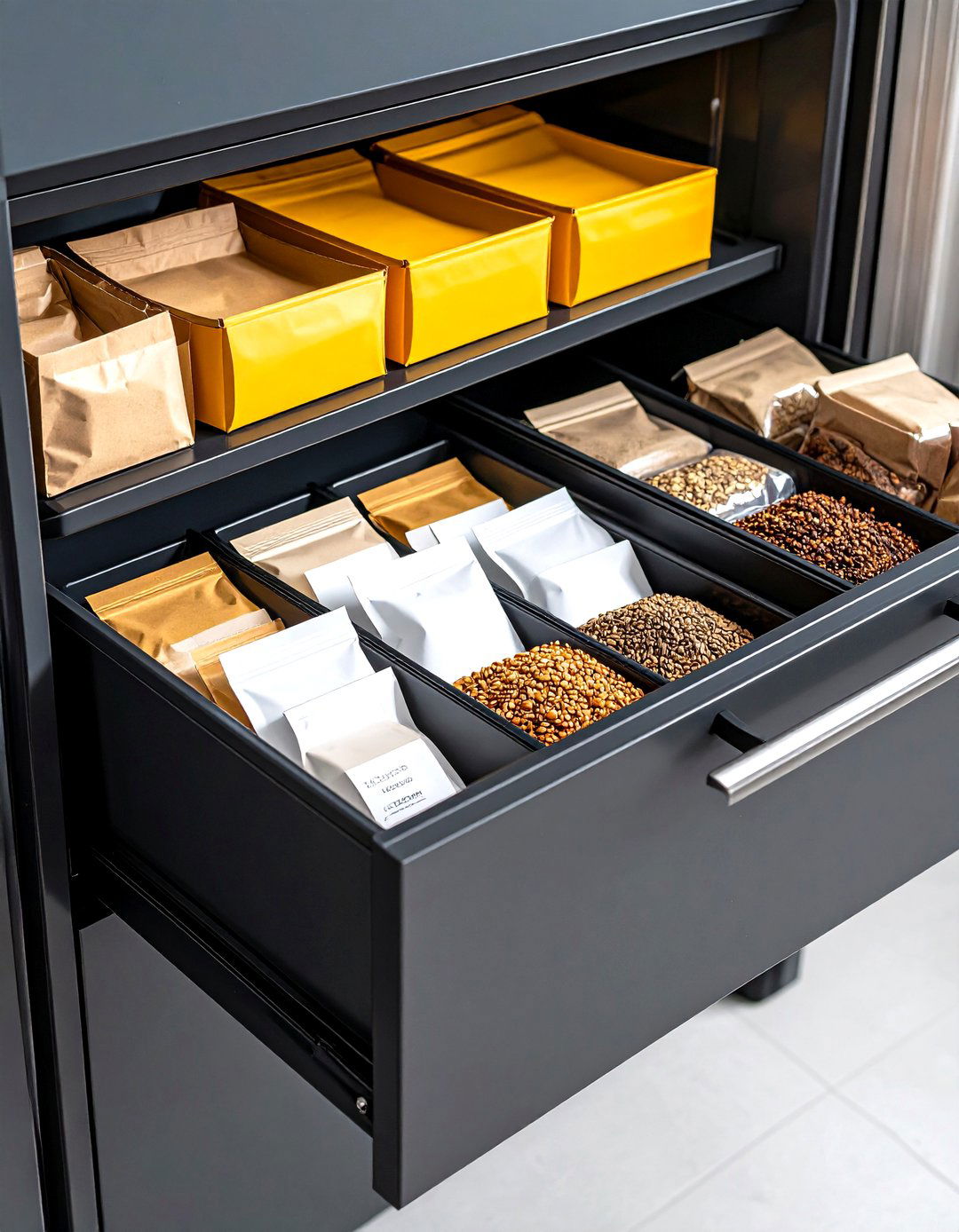
Designate a drawer in your refrigerator for seed storage. Line shallow trays or boxes with paper envelopes and silica packs, then place in the crisper drawer where temperatures are most consistent. This method guards seeds against room-temperature fluctuations, especially in homes without dedicated root cellars.
15. Large Airtight Tub with Desiccant
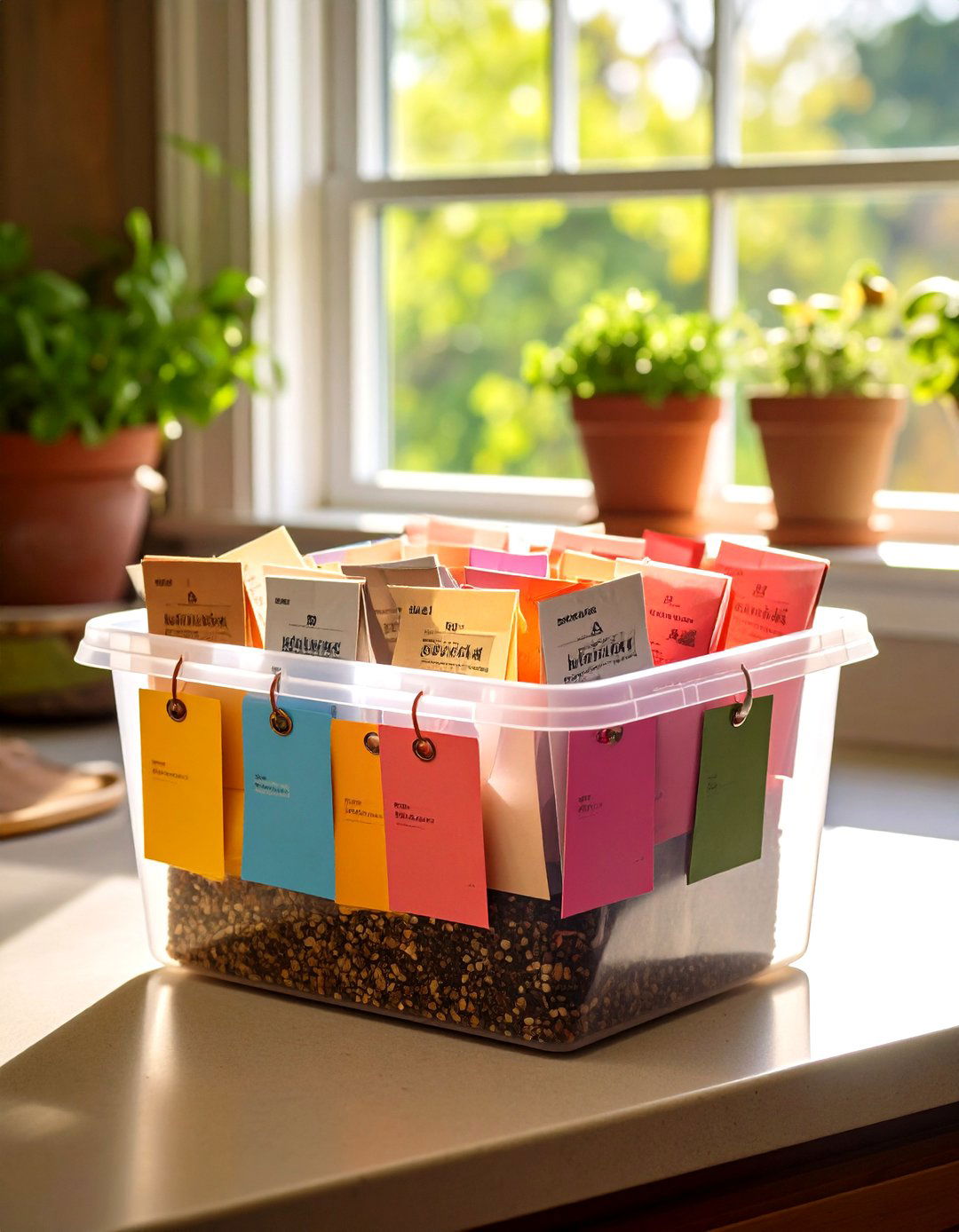
A large plastic tub with a clamp-down lid can store hundreds of seed packets. Spread a layer of desiccant packs on the tub’s bottom, then arrange labelled brown paper bags or envelopes inside. Monitor tub humidity intermittently with a small digital hygrometer to ensure levels stay below 15% relative humidity.
16. Metal Recipe Box with Dividers
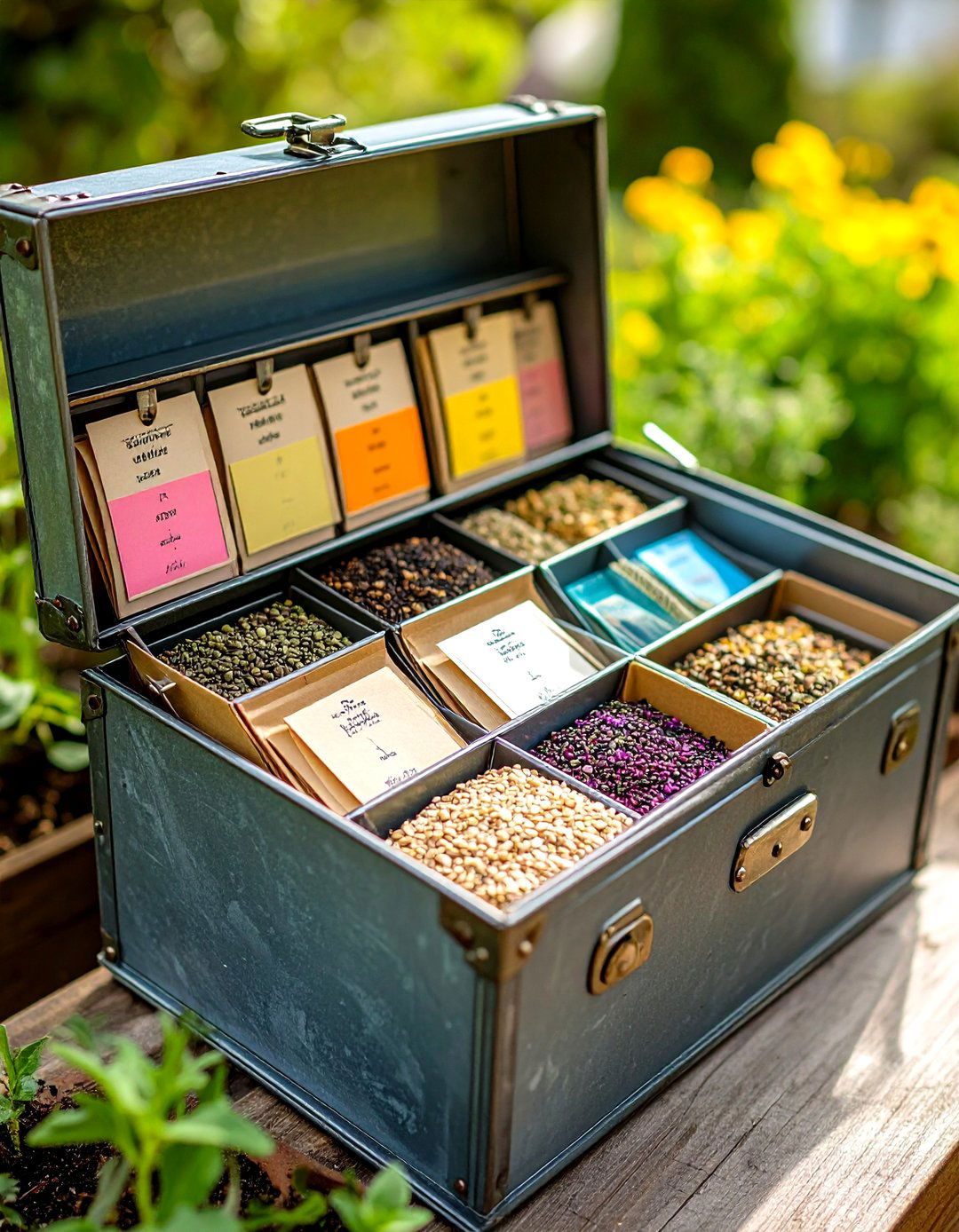
A steel or tin recipe box equipped with dividers works well for smaller collections. Each section can hold multiple seed packets organized alphabetically or by planting season. Metal’s durability, when paired with silica packs and kept in a cool, dark place, provides a stable microclimate for seed longevity.
17. Upcycled Jelly or Spaghetti Jars
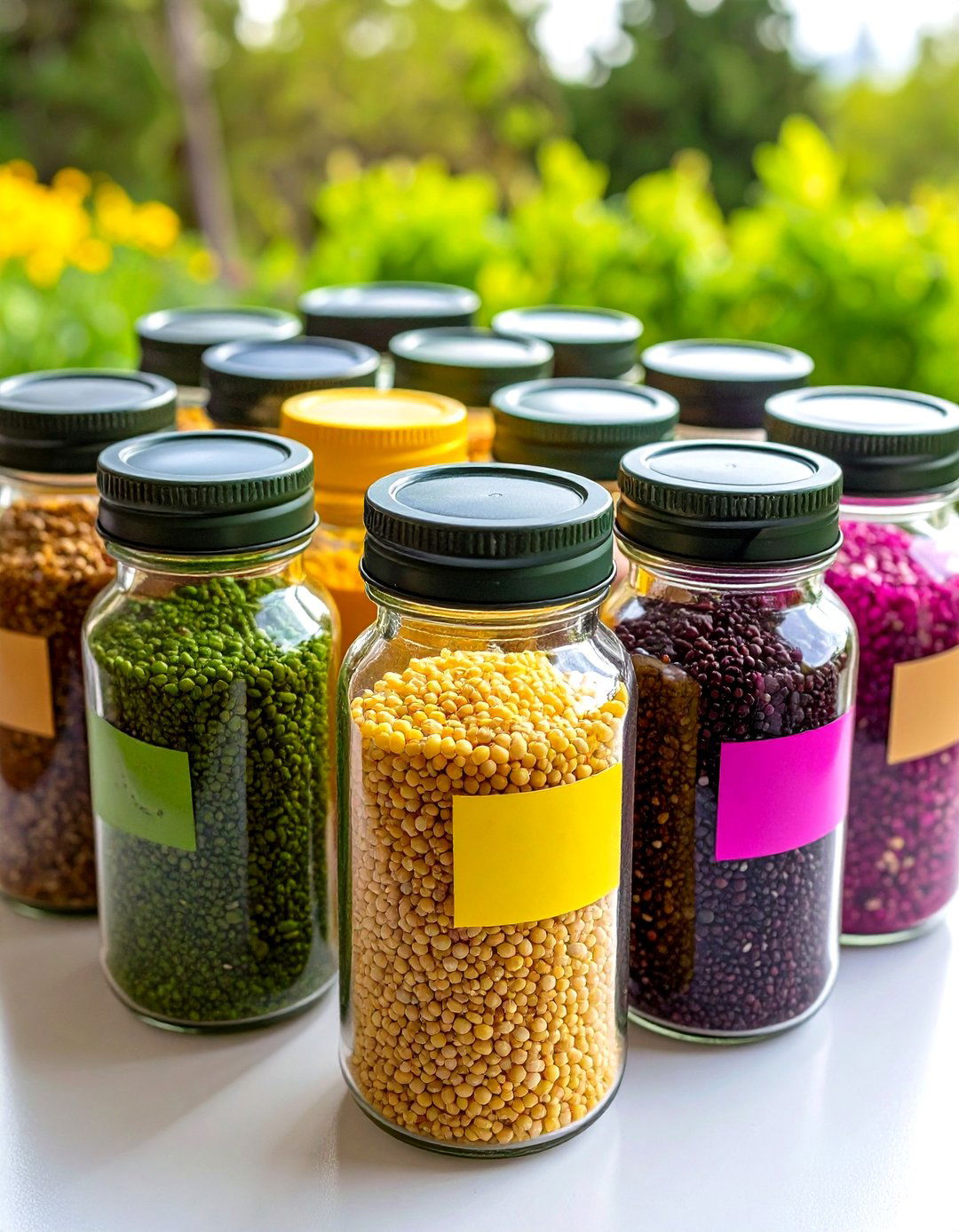
Clean, clear glass jars formerly used for jams or sauces make excellent seed vessels. Their screw-top lids can be fitted with a small strip of foam or gasket to improve the seal. Label the lids with erasable markers for reuse, and tuck desiccants inside. Store in a closet away from heat sources.
18. Vacuum-Sealed Glass Vials
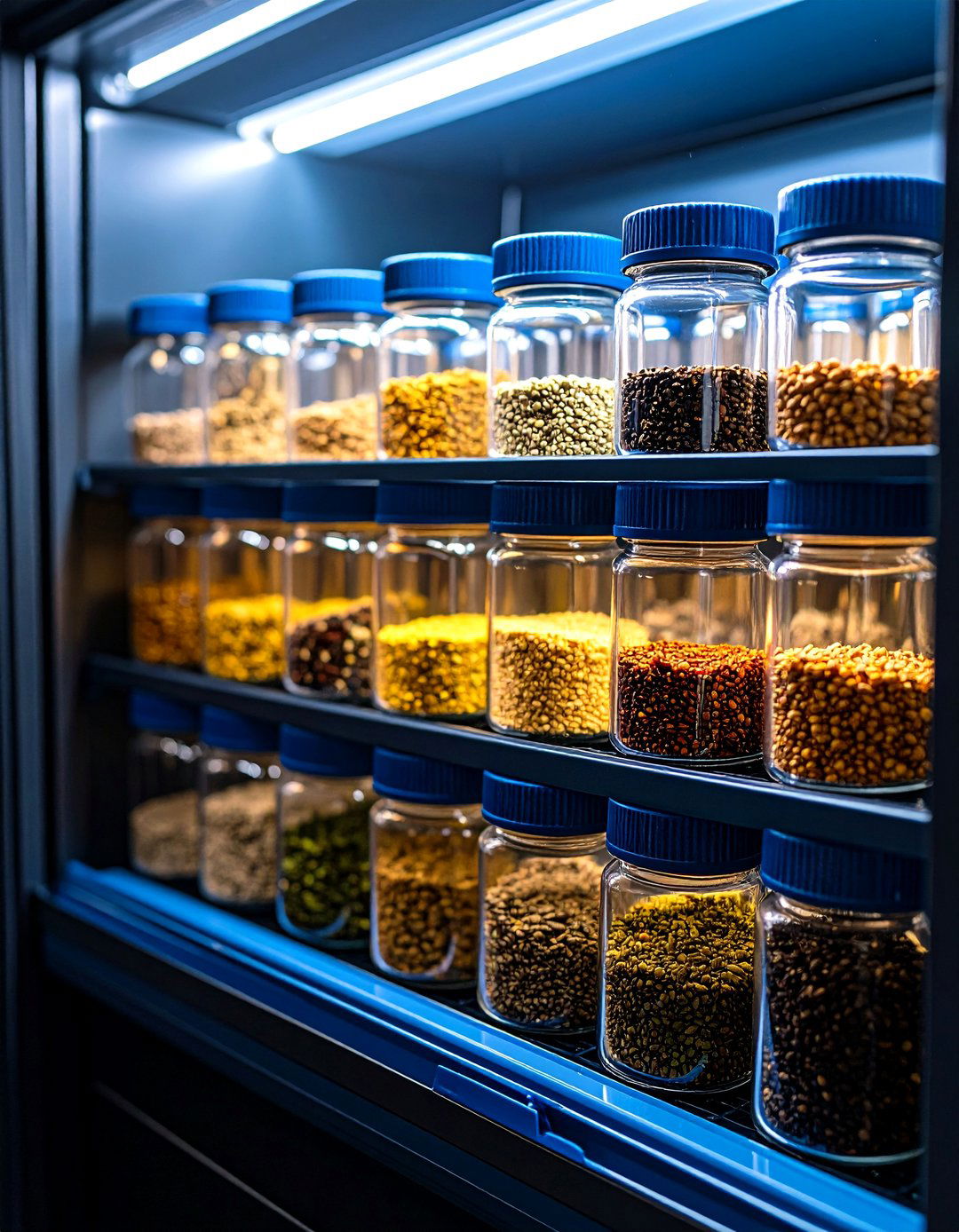
Small glass vials (like those for essential oils) can be vacuum-sealed using a food vacuum sealer adapter. After sealing, place vials in a larger airtight box or fridge. This dual protection—vacuum removal of air plus refrigeration—ensures maximum viability, often extending seed life beyond 10 years.
19. Seed Library Box with Index System
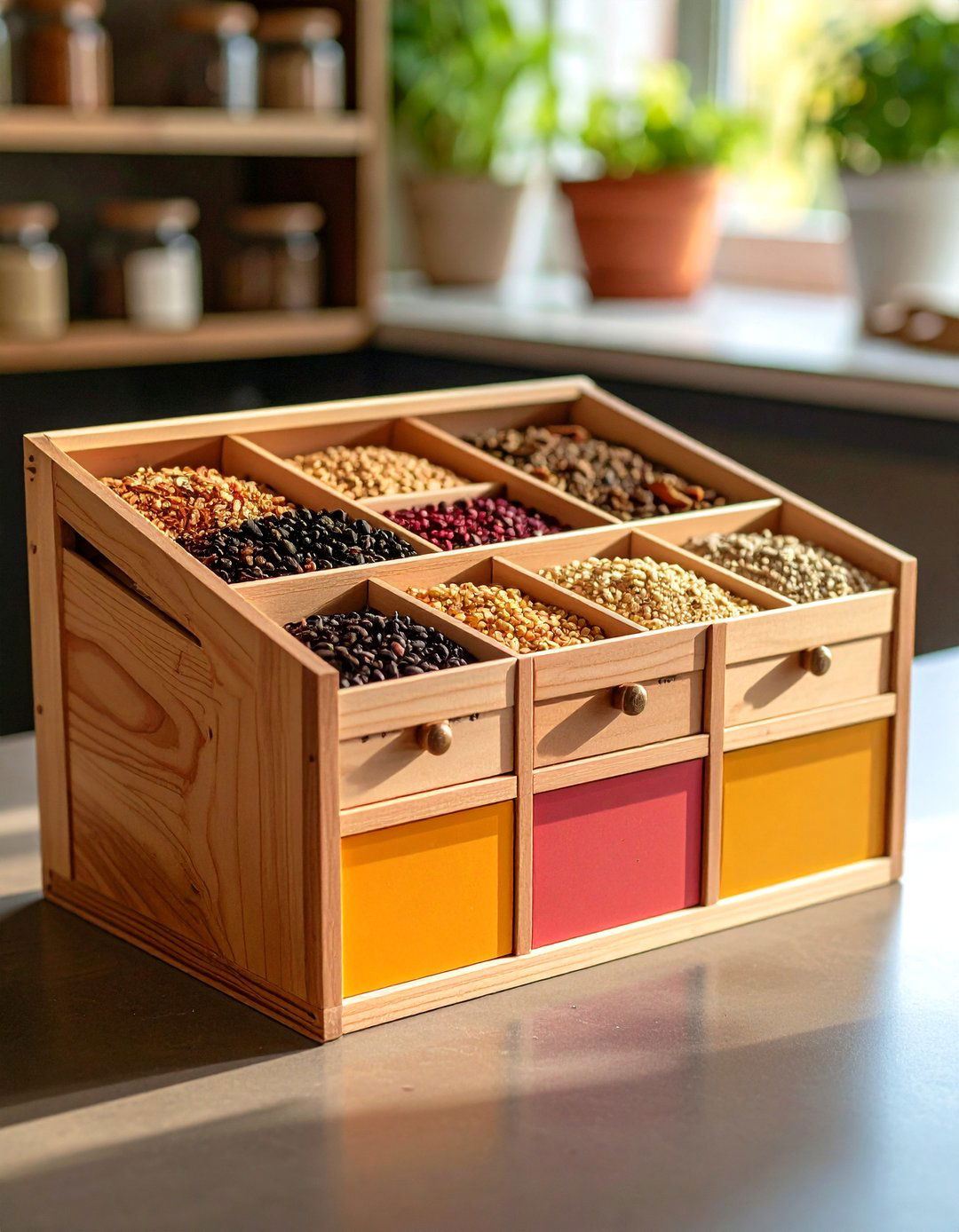
Create a “seed library” by building a shallow wooden box with internal partitions and index tabs. Each section holds seed envelopes sorted by variety. Keep a master index on the box’s lid for quick reference. Store the box in a root cellar, basement, or cool pantry, and check desiccant packs annually.
20. Cardboard Dividers in Storage Box
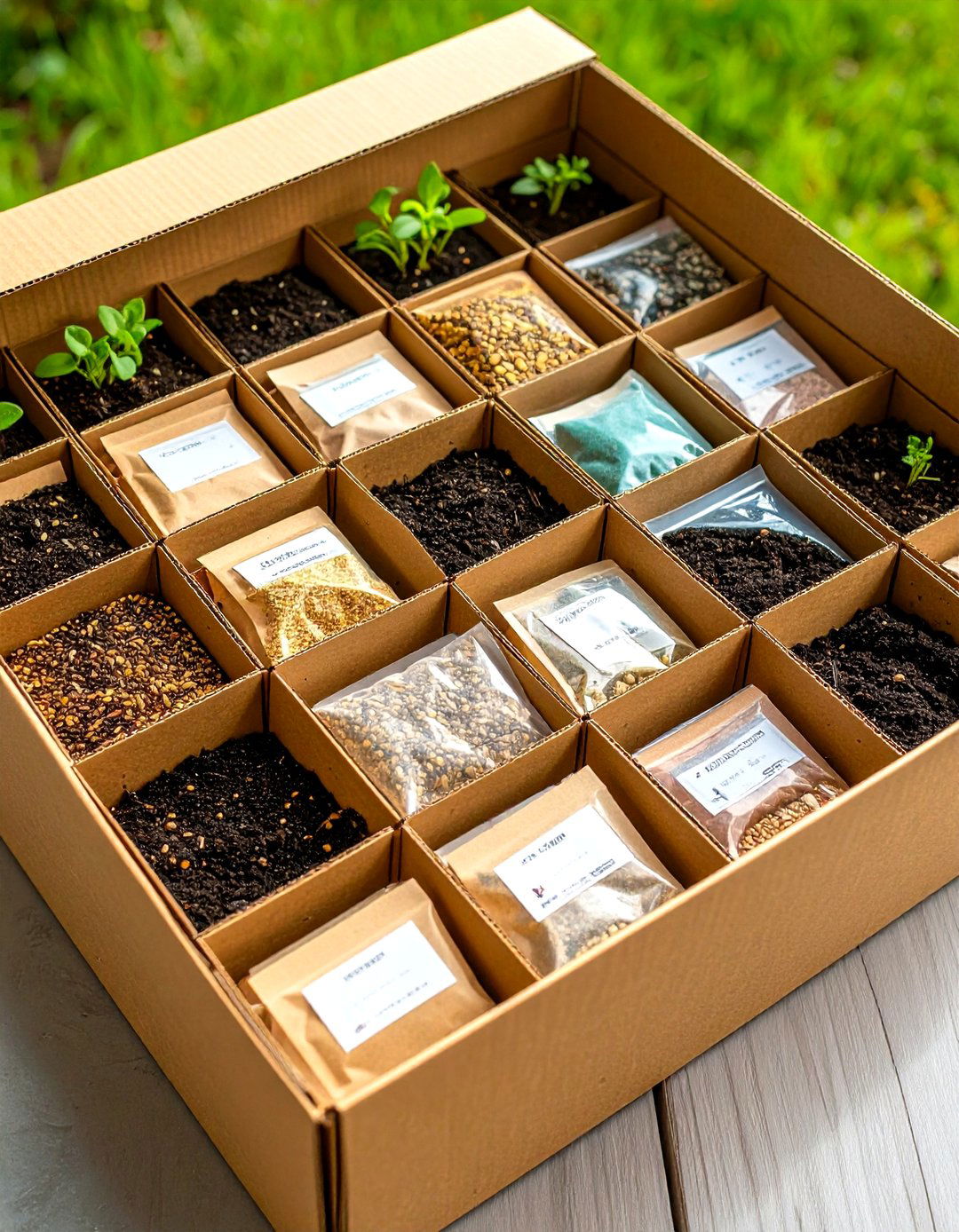
Use sturdy cardboard cut to fit inside a larger box, creating grid‐like compartments for seed packets. Label each compartment on the top edge, and place a silica gel packet in each grid. This ultra-budget version provides structure and moisture control, and it can be easily recycled or replaced as needed.
Conclusion:
Choosing the right seed storage method depends on your collection size, available space, and desired storage duration. Key elements across all approaches are airtight containers, moisture control via desiccants or refrigeration, consistent cool temperatures, and clear labeling or indexing. From DIY options like origami envelopes and cardboard dividers to specialized vacuum-seal systems and vintage humidors, these 20 ideas offer versatile solutions to keep seeds viable, organized, and ready for vibrant gardens year after year.


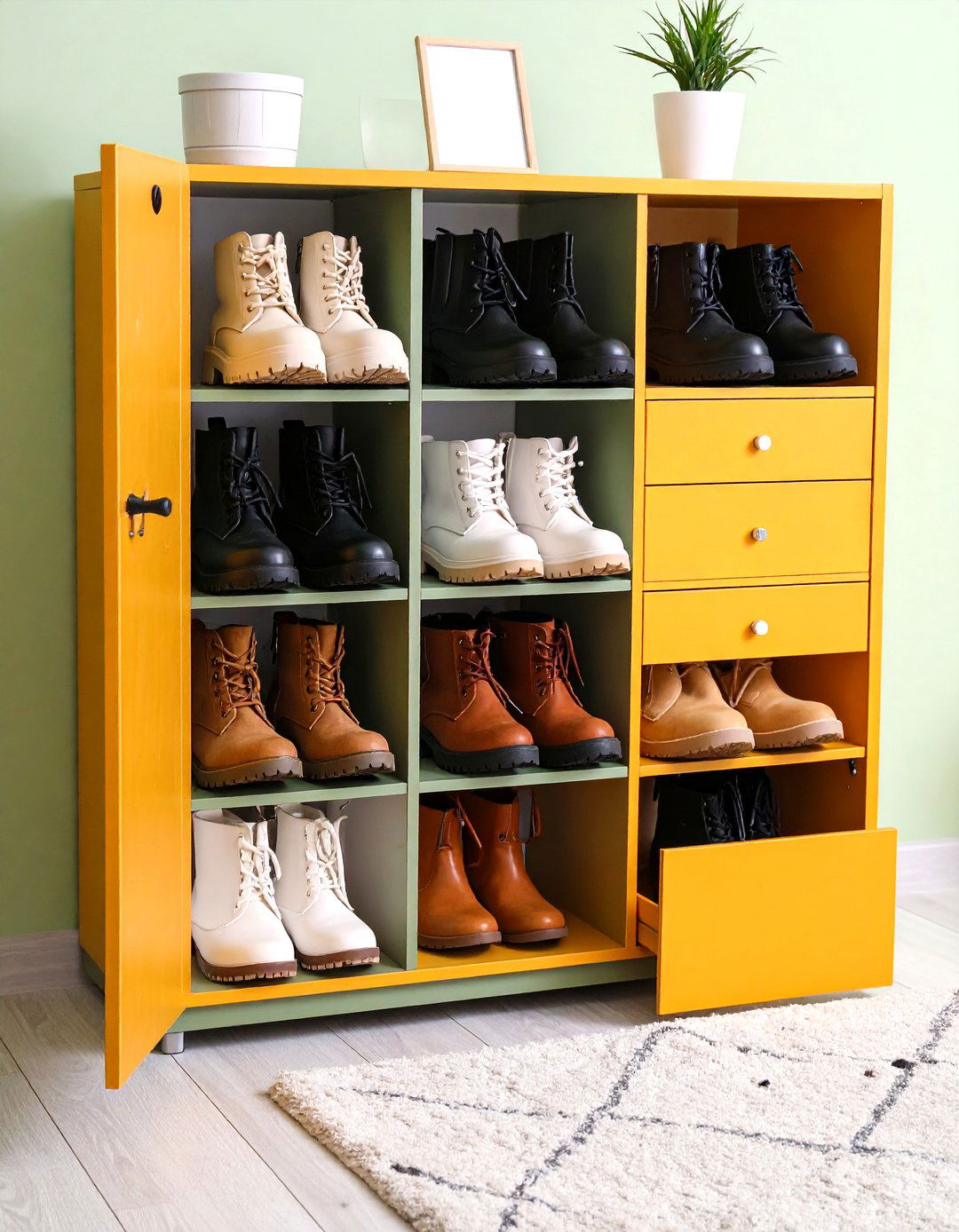
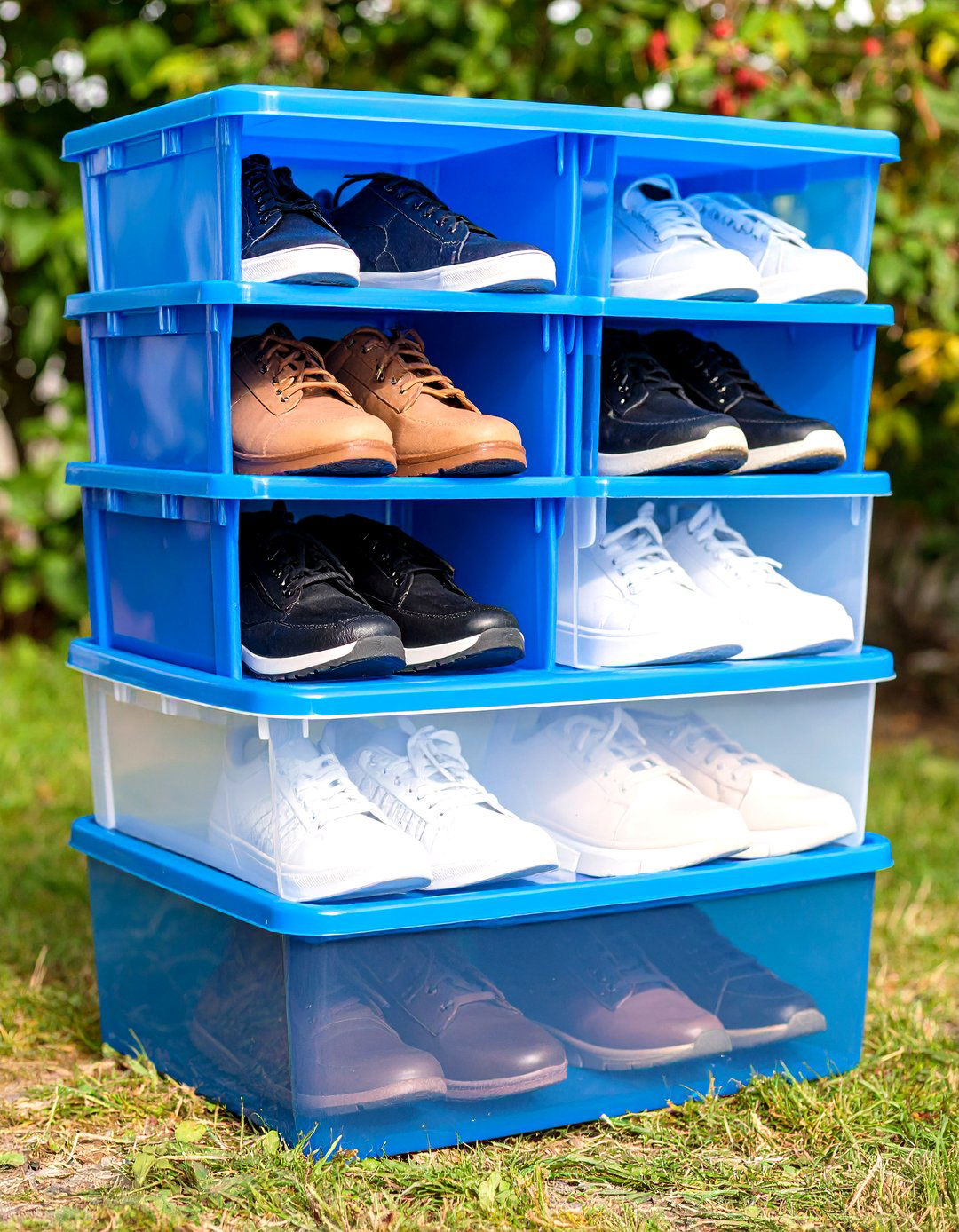
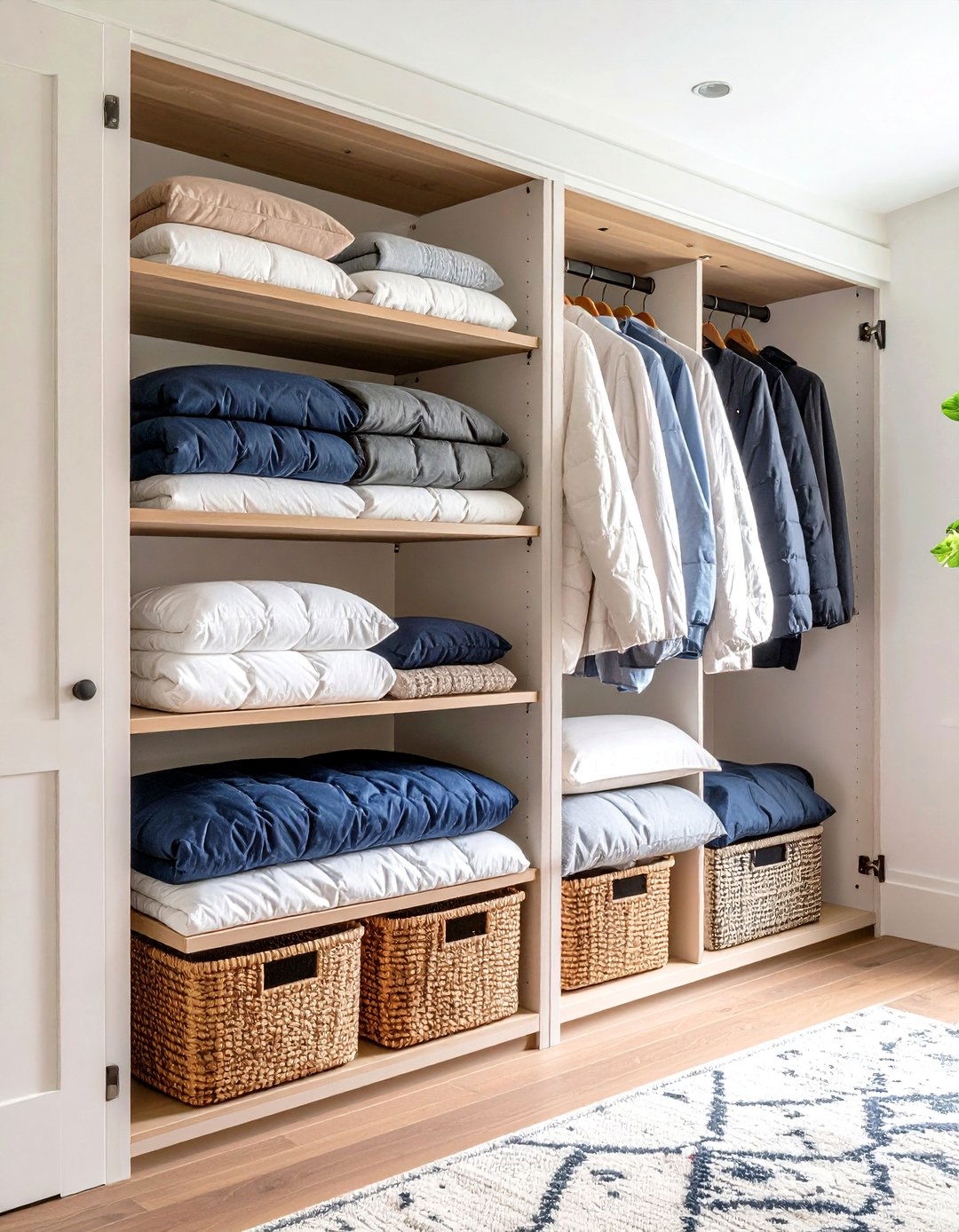
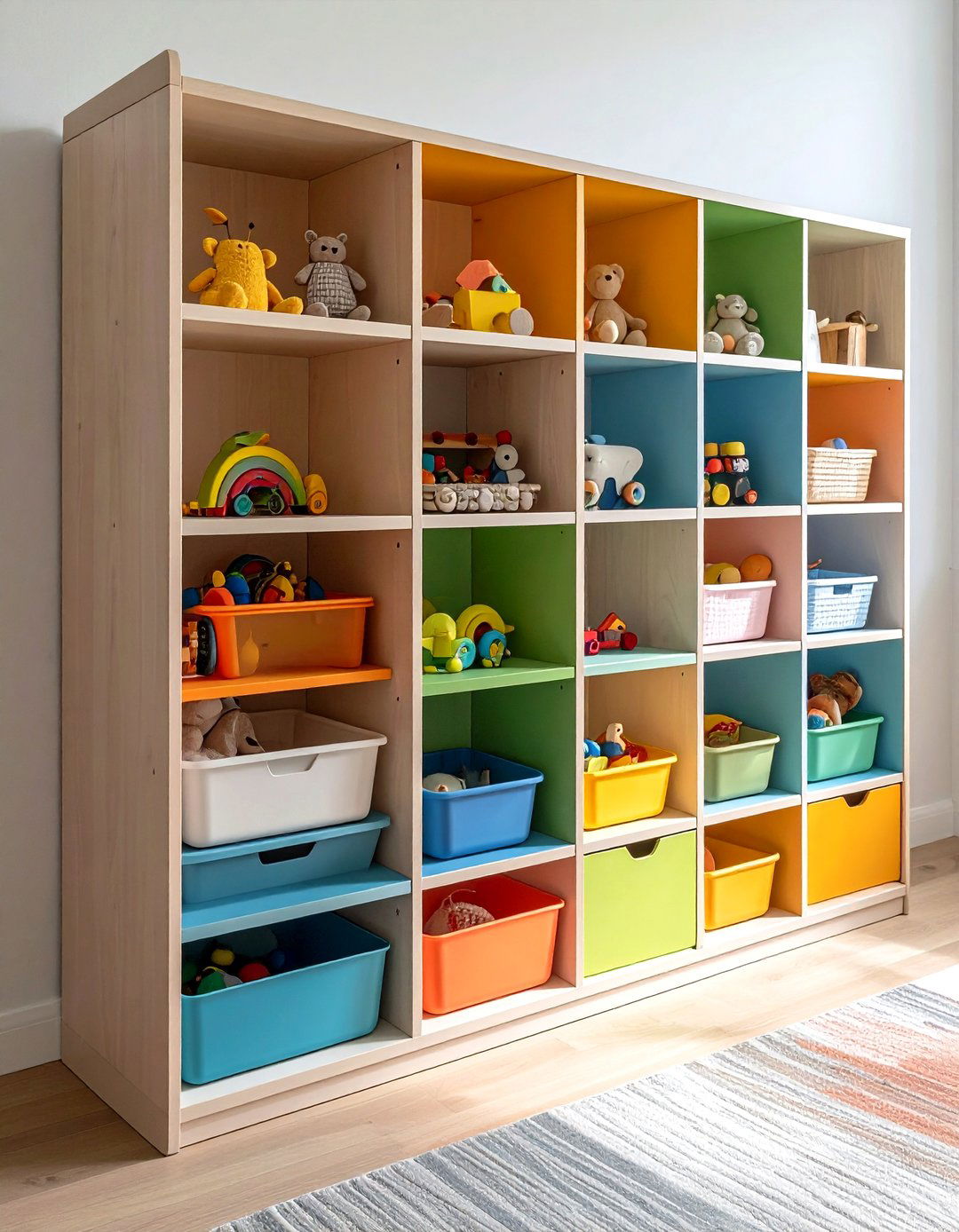




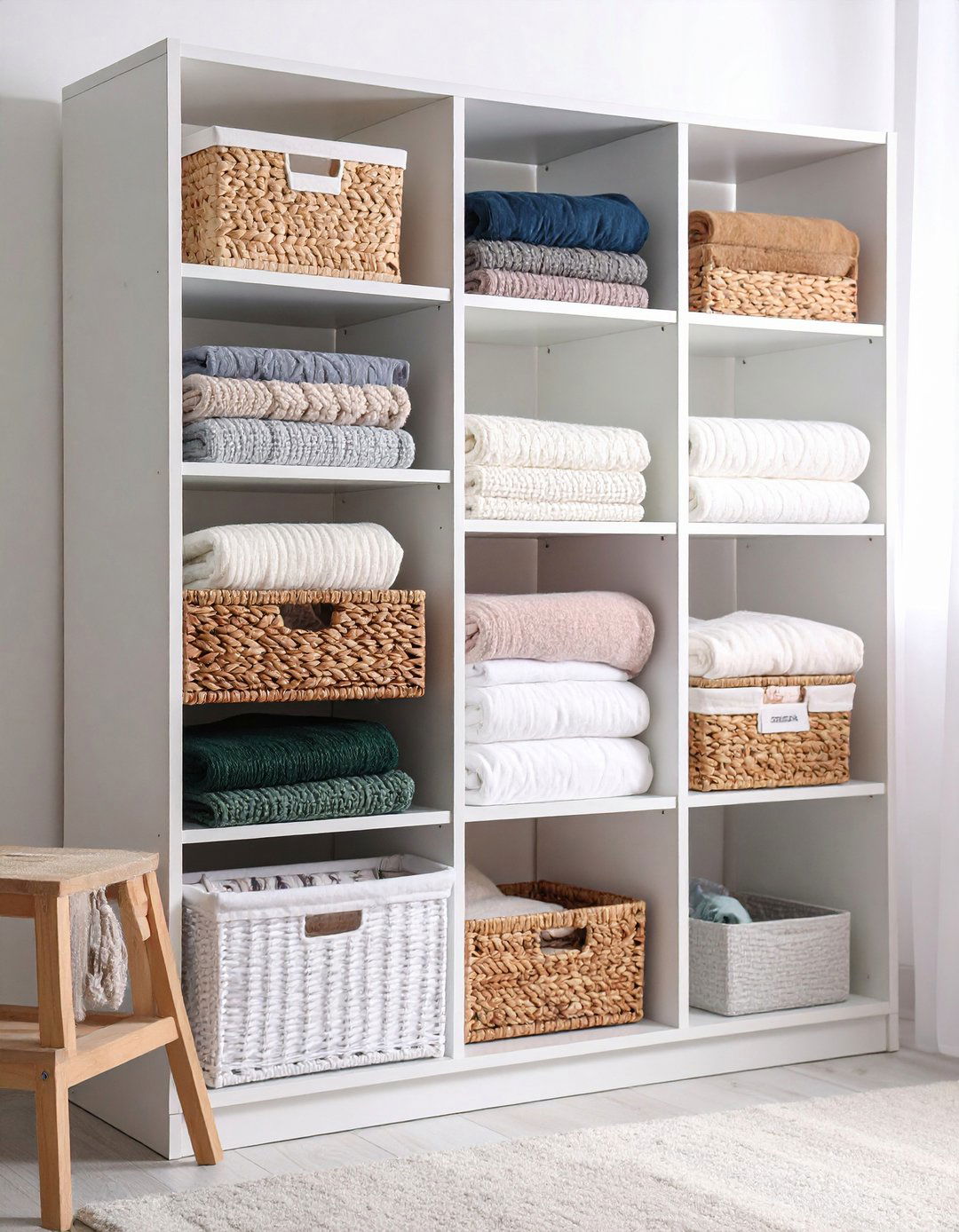


Leave a Reply